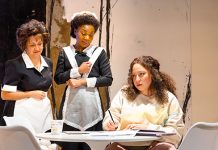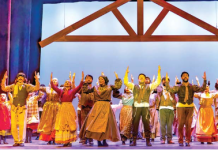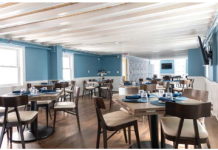By Linda McK. Stewart
Like a fortified stronghold of a Middle Ages fiefdom, the J. Paul Getty Museum crowns a lofty peak of the Santa Monica foothills, looking down on the sprawl of Los Angeles far below.
Unlike so many world-famous museum – the Met in New York, the Louvre in Paris, the Prado in Madrid – the Getty neatly bypassed the common architectural dilemma of having to fit into an existing urban context. It was a circumstance that must have delighted architect Richard Meier when he first sat down at his drawing board. He not only had 750 mountaintop acres at his disposal, he also had an unlimited bank account and carte blanche to do as he pleased.
Ground was ceremoniously broken in 1987. Ten years later, almost to the day, the first visitors boarded the three-quarter mile electric tram gliding silently up the steep incline to the lofty heights where the Muses are enshrined.
The nine-building complex is composed of an inner courtyard that opens onto gardens, arbors, fountains and pools, with spectacular views of far-off Los Angeles and the blue, blue Pacific. The Getty art collection, in all its bewildering diversity, is housed in five of the nine buildings. One’s first and enduring impression upon stepping off the tram is the amplitude of light. The Southern California sunshine is as vital an element in the museum as its 16,000 tons of Italian travertine imported from Bagni di Tivoli, some 10 miles east of Rome. The travertine in myriad shades of white is interspersed with walls of glass and calming intervals of beige stone. The whole is brilliantly unified by the light of the sun, subtly changing as it follows its diurnal arch.
J. Paul Getty (1892-1976) was an extraordinary man – did his own children really address him as Mr. Getty? – a man of fathomless intellect who was fluent in English, German, French and Italian and quite capable of negotiating business in Spanish, Arabic, Russian and Greek; a man who read easily in both Latin and Ancient Greek. Largely self-taught in fine arts, he was no less interested in the sciences. One of his keenest interests was photography.
A fellow enthusiast, albeit of the previous century, was Queen Victoria, who also was fascinated by the emerging art/science of capturing in perpetuity, light, the total absence of light and all gradations in between, i.e. photography. There’s no doubt that both Mr. Getty and Her Imperial Highness would delight in the current Getty exhibit through June 8 entitled “A Royal Passion: Queen Victoria and Photography.”
America’s 19th century introduction to the marvels of photography came largely through Matthew Brady and heartrending photos of corpse-strewn battlefields of the Civil War 1861-65. But in Great Britain, Queen Victoria began what was to become a priceless collection of early photography as early as the 1840s. In 1857 the Manchester Exhibition, the largest open-to-the-public exhibit of fine arts ever held in Britain or anyplace else included the medium of photography.
The success of this newest art form was virtually guaranteed by the reception it was accorded by the queen and by her consort, Prince Albert, who personally opened the exhibit. During her long reign, Victoria was frequently photographed, initially as a newly anointed monarch, then with Albert at her side. She often posed with her nine children and after Albert’s premature death at the age of 42 in 1861, she continued to be photographed holding photos of her departed husband. She was the first British monarch to have her life fully recorded by the camera, and her portraits became emblematic of an entire age.
In 1897 in honor of Victoria’s Diamond Jubilee, a grand parade, complete with the mounted royal guard escorting Her Majesty in her horse-drawn carriage was captured in a 30-second filmstrip. It was the world’s first newsreel. Until then a photographer required his subjects to hold absolutely motionless, sorely trying patience on both sides of the lens. The camera that filmed the parade is mounted in the center of the gallery, housed inside a heavy wooden box, the size of a small refrigerator. It looks far too heavy to be carried or moved by just one man – even one very strong man.
Well before the advent of color film, the monochromatic pictures were artfully hand-colored in watercolors, a technique which Victoria obviously favored, given how many photographs show her with tinted cheeks, a blue satin sash, or bright-hued tartan shawls over her shoulders. As an old lady, swathed in yards and yards of black taffeta, she poses at Balmoral, sitting sidesaddle on a homely, (but doubtless dependable) horse. The bridle is held by a groom in formal Highland dress. Though no caption so states, it is safe to assume that he is John Brown, her forever-faithful servant and friend, the subject of so much speculation among biographers and historians. This unique exhibit will remain at the Getty until early June.
The Getty, the land, the planting and all nine buildings, start to finish, cost $1 billion – a shocking sum. But to keep everything in context, it may help to know that a single B-2 bomber costs $2.2 billion.
IF YOU GO: For information about the Getty Museum, call 310-440-7300.














